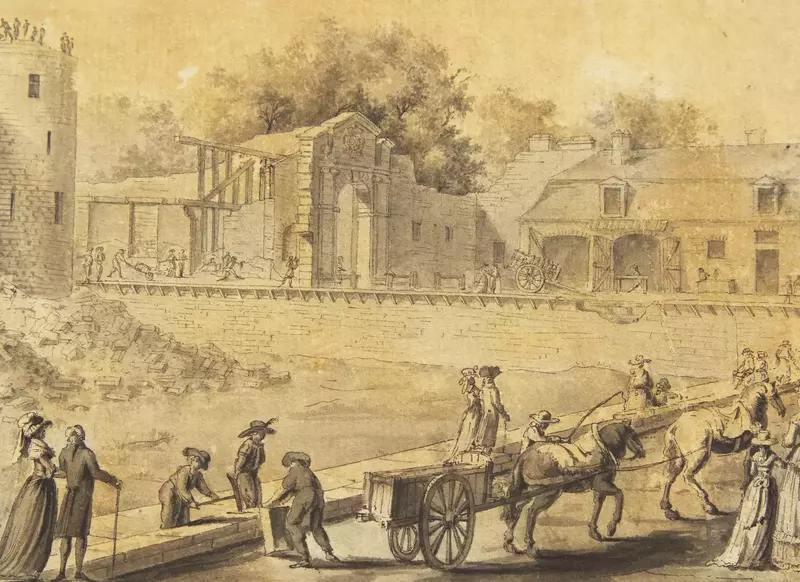
The Destruction of the Bastille
Personal Gift from the Marquis de Lafayette to President George Washington Comes to Auction at Freeman’s | Hindman this Fall
Freeman’s | Hindman is honored to announce that it will bring a unique piece of American and French history to the auction block this September in its Books and Manuscripts auction in Philadelphia. The Destruction of the Bastille is an ink-wash drawing made at the onset of the French Revolution and only weeks after the Bastille fell. It was gifted to George Washington by famed French military commander and hero of the American Revolution, the Marquis de Lafayette, who was one of Washington’s most trusted military commanders during the Revolutionary War. The drawing would become one of Washington’s most cherished possessions, hanging prominently in the presidential house during his two terms, and then in the entryway of his Mount Vernon home, even after his death. It is estimated to sell for $500,000 - 800,000.
Lafayette’s gift will retrace its original steps in an international tour leading up to the auction starting with a stop in Paris from June 21 through June 29. Its appearance at Didier Aaron & Cie will mark the first time the drawing has been on French soil since it departed for the newly United States in 1790. The drawing will then return stateside where it will be displayed in New York, Chicago, and Philadelphia.
“Freeman's | Hindman is extraordinarily proud to offer this incredible testament to the power of liberty over oppression,” said Darren Winston, Freeman’s | Hindman’s senior vice president and co-head of the Books and Manuscripts department. “It seems only fitting that it returns to Paris, the heart of French democracy, before being sold in Philadelphia, the cradle of American democracy. I can only imagine Washington and Lafayette would have appreciated the symmetry.”

A Tribute to the Patriarch of Liberty
At the onset of the French Revolution, the Marquis de Lafayette sent his dear friend and former commander, and the first President of the United States, George Washington, two gifts on behalf of the French people in appreciation of his embodiment of worldwide liberty: a drawing of the demolished Bastille, and the main key to the prison. As the prison served as a symbol of French royal oppression, the drawing of it, capturing its demise, was Lafayette’s way of signaling to his mentor his gratitude and indebtedness in light of their shared victory against British oppression during the American Revolution.
After the fall of the Bastille, Lafayette was placed in command of the Paris National Guard, thanks in large part to his heroism and experience in the American Revolution, and was then tasked with keeping order throughout the city. In August 1789, less than a month after Parisians stormed it, Étienne-Louis-Denis Cathala, an architect and inspector overseeing the prison’s demolition, captured the historic moment of its destruction. After months in transit, the drawing and key were finally presented to President Washington in New York in August 1790, a little more than a year into his first term. Upon receiving them, Washington would enthusiastically declare them tokens of “victory by Liberty over Despotism.”
Washington would prize this drawing for the rest of his life, keeping it, along with the key, first at his Presidential homes in New York and Philadelphia during his time in office, and later sending them to his home, Mount Vernon, after serving his two terms as president. The drawing was proudly displayed in the entrance hall of his residence for all to see, a symbol of his relationship to Lafayette, his commitment to justice and liberty, and its meaning for America.
In October 1824, 35 years after he gifted the Bastille relics to Washington, and 25 years after the death of Washington, Lafayette was finally reunited with them when he visited Mount Vernon during his triumphant tour of the United States. For Lafayette, it was an emotional moment and a deep reminder of the closeness with which the two held each other, and whose bond established the continuing friendship between France and the United States.